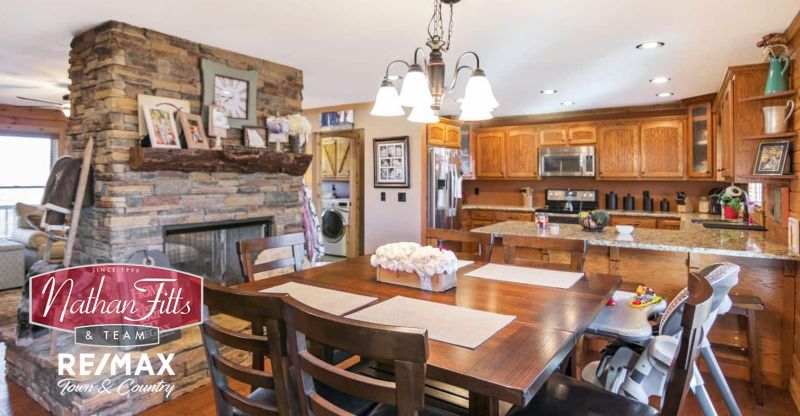
As all great real estate agents know, the best way to sell a home is to give the buyer a reason to fall in love with it. The percentage of potential buyers who shop for homes online before seeing them in person grows each year, and in 2016, it was reported that 80% of all home buyers do most of their searching online.
Put yourself in a home buyer’s shoes. If you were looking for a new place to live and the home was described in the listing as having four bedrooms, a finished basement and a spacious backyard, but the only photo available online was of the living room, you’re likely going to pass on considering the home as an option. You might search the address in Google and virtually stand in the front yard to see the home’s exterior, but unless you can check out bedrooms, bathrooms, the kitchen, and other primary living spaces on the website, you’re going to be disinterested.
For younger home buyers, having fewer photos also gives the impression that the agent isn’t as well organized, or that he or she doesn’t give 100% effort to the listing, which would be a huge turn-off. Now you’ve got disinterested buyers who could have been a great fit for the home, but because they are under the impression that the agent isn’t thorough or tech-savvy (or worse, that the lack photos means the agent is trying to hide a problem) they’ll most likely never request a tour or step foot inside the house. Be proud of your home and what it has to offer, and don’t let a lack of photos sway someone into thinking that you’re hiding an issue.
How buyers find and tour Blue Ridge homes digitally
When a buyer is looking for a new home in the Blue Ridge area, he or she is going to start in a few common places: using a search engine, looking to social media, or inquiring from a friend or home owner in the area. If you’re using a search engine to find a home, chances are that you will be brought to a local real estate company’s website or to a national site like Zillow or Trulia. Looking through pages and pages of homes on a website is convenient for the buyer, but it also becomes easy for your house to be viewed as just another line on the page. As users, we are much more likely to interact with, share, and follow up on a post that has detailed descriptions and photos that give us the sense of what the entire property has to offer.
On social media sites, the photo of the home is what occupies the most space in your post, followed by a short title and one-sentence description of the home itself. Posts are often shared by friends and commented on with reactions or questions about the property. For people who know of friends that could be a good fit for the home, the social media user can simply tag their friend in a comment or share it to their page as well. The photos are what entices people to click on the links and explore the listings, but if you don’t include photos that are presenting homes in the best light, your post will be passed over and won’t be shared between friends.
How to ensure you’re presenting homes in the best light
Fear not, you definitely don’t need high quality camera equipment to get the best photos of your home, but there are several things you should be doing to ensure that you’re presenting homes in the best light, and we mean that both figuratively and literally. If you are looking into purchasing a new camera though, consider also getting a tripod to help you with stability and clarity when snapping pictures.
We’re getting ahead of ourselves a little bit here though, because the first step of any good photo shoot is to prep the area to look its best. Cut the grass, clean up clutter from countertops, vacuum the carpets, remove any items that might be too personal. For example, if you want to show off your gorgeous fire place, but have a large family portrait hanging above the mantel, consider swapping the photo out if you don’t want the portrait to be made public on real estate websites. Another great reason to declutter or to not have detailed decorations is that it allows the person viewing the photos to imagine his or her own stuff set up in the home.
Choose a day that’s sunny and bright, with great natural lighting to support your home’s best features. You’ll want to shoot photos of the outside of the home, showing off accessibility features and any other central details, such as the driveway, garage, patio, or landscaping. Don’t forget to show off the backyard too!
Inside the home, your photos should highlight main living spaces and features that would be attractive for the buyer. If your description promotes amazing cabinet space and a large pantry, show them off in your photos! The same goes for closets and bathrooms. Making sure that you include areas that are great for family gatherings, as well as storage spaces and other amenities.
If you advertise your home as having four bedrooms, don’t just include a photo for one of them! People want to be able to see and get a feel for the size of each room, and that includes closet space and bathroom access. Bonus rooms, finished basements, and office spaces are attractive to buyers too, and it’s important that your photos show potential buyers that the home will make for an easy transition.
Particularly with mountain homes and cabins, photos should include the greater landscape or the view if you think it’s something the buyer would like. Outdoor living spaces, like porches, firepits, hot tubs, and grilling areas would also be great additions to your photo gallery. Don’t forget the main real estate marketing goal: show someone why they should fall in love with your home.
How photos can help increase leads
Largely because of social media, real estate marketing has shifted to include digital postings, along with mobile-friendly content, photos and video. We are more likely to watch a video or stop on a picture when we’re scrolling through a social media site, more so than we might read text or click on an outside link. Buyers are doing research online and many want to feel as though they’ve taken a virtual tour of the home before they schedule time to tour it in person or attend an open house.
When a potential buyer can see themselves living in the home, or know of someone who would be a great fit for the property, they will want to interact with the listing, talk with their agent, and communicate with the realtor to tour it in person and learn more. The digital landscape has become crucial to selling a home, but you’ll also have buyers who are more educated about the property, which in the end, will be much more valuable for the realtor.

